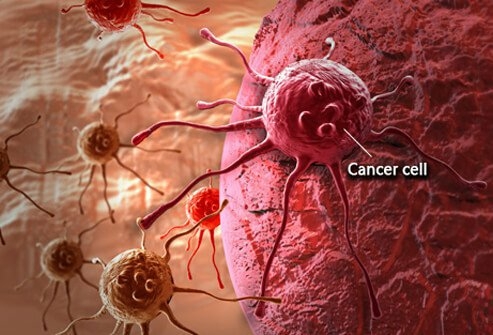Cancer kills: Nearly 1.7 million people received a cancer diagnosis in 2017, and more than 600,000 people will die from it, according to a report from the American Cancer Society (ACS). And the picture seems especially dire for men. For all types of cancers combined, cancer rates are 20 percent higher in men than women—and they are 40 percent more likely to die from it, too. So it’s no surprise that cancer ranks as the second most-common killer of men.
The even scarier part? Many of the leading cancer killers have no clear cut symptoms in their earliest stages. And that’s one instance where ignorance definitely isn’t bliss: Hard-to-spot cancers—whether preventive screenings aren’t available yet or you don’t recognise the symptoms as something serious enough to get checked out—can lead to a delay in diagnosis and treatment, which can reduce your chances of successfully beating it. So we’re making it our mission to shine a light on these hard-to-spot cancers.
Read on to find how they might take hold in your body before you even realise it, and what you can do about them before it’s too late.
1. WHY LUNG CANCER CAN BE HARD TO DETECT
Even though prostate cancer may be more common, lung cancer is by far the leading cause of cancer death in men. Only 16 percent of lung cancer cases are diagnosed at an early stage, according to the American Lung Association. Once the disease spreads and becomes more aggressive, only 4 percent of people survive at least five years.
Why it’s hard to detect: Most people associate lung cancer with smoking, but that doesn’t paint the whole picture, says David Ross Camidge, M.D., Ph.D., professor of medical oncology and lung cancer researcher at the University of Colorado Cancer Center. While smoking is linked to the majority of lung cancer cases, the disease still strikes people who have never even touched a cigarette, he explains.
In most other cases, blame radon, a natural gas that you can’t see or smell. Radon is the second leading cause of lung cancer in the U.S.—and about 1 in 15 homes have high radon levels, according to the CDC.
Plus, you might not even realise you have lung cancer until it’s already advanced to a more deadly stage: “Your lungs are mostly air, so you can actually grow a fairly decent sized mass without even noticing it,” says Dr. Camidge. “By the time you get symptoms, the cancer may have already spread.” These symptoms include a constant cough, shortness of breath, and unexplained weight loss. But the U.S. Preventive Service Task Force has pretty narrow guidelines for who it recommends receive CT scans for lung cancer screening: those who smoked a pack of cigarettes a day for at least 30 years, are either still smoking or have quit within the last 15 years, and are aged in their 50s through 70s. “So if you’re a guy in your 30s and you’ve never smoked, you’re never going to qualify for a screening test,” says Dr. Camidge.
What you can do: Skip the stereotypes. Regardless of whether you’re a smoker or not, don’t ignore the telltale signs of lung cancer listed above when they do appear. Many doctors will hear that you have a cough, have never been a smoker, and automatically assume that it can’t be lung cancer, says Dr. Camidge. So they’ll usually treat you for less serious conditions that share common symptoms, like asthma or bronchitis. But if your cough persists for a couple of months, you should talk to your doctor about your options for a test, especially if you cough up blood.






Discussion about this post